
Understand the use of Creative Commons. [2:21]
- Subject:
- Computer Science
- Technology
- Material Type:
- Audio/Video
- Date Added:
- 08/01/2022

Understand the use of Creative Commons. [2:21]
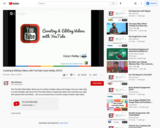
The YouTube Video Editor allows you to combine multiple videos and images, trim your video clips to custom lengths, add music from YouTube's library of approved tracks, and customize your clips with special tools and effects. Join us as we learn how to use this simple, intuitive video editor, publish and share videos, and explore additional ways YouTube videos can enhance your instruction!

The goal of this experience, created by Project Lead The Way ( PLTW), is to develop a STEM mindset while learning the basic concepts of encryption and decryption. Learners build and use their own cipher wheel to create a secret message as they explore basic cryptographic algorithms.
Estimated time required: 1 class period.
Technology required for this lesson: Laptop/Desktop, Smartphone, Tablet.

In this interactive activity from the Building Big Web site, investigate dams in distress and decide if they should be repaired, removed, or left alone.

The downloadable monograph examines the history and technology of gasoline.
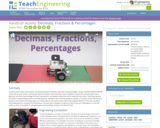
Students learn about and practice converting between fractions, decimals and percentages. Using a LEGO® MINDSTORMS® NXT robot and a touch sensor, each group inputs a fraction of its choosing. Team members convert this same fraction into a decimal, and then a percentage via hand calculations, and double check their work using the NXT robot. Then they observe the robot moving forward and record that distance. Students learn that the distance moved is a fraction of the full distance, based on the fraction that they input, so if they input ½, the robot moves half of the original distance. From this, students work backwards to compute the full distance. Groups then compete in a game in which they are challenged to move the robot as close as possible to a target distance by inputting a fraction into the NXT bot.

What is reading? Explore this article from to find the answer to this question.

In this life science-focused activity, students will pretend to have internships as environmental scientists as they research why exactly water is essential for life. They will collect and analyze data to help them calculate about how much water they use on a daily basis and consider where cuts can be made. Following the virtual experience, students will calculate approximately how much water each person would need per day to survive on Mars. They will consider how much of this water could be reused, and they will determine how much water the people on Mars need to survive until the shuttle returns from Earth. Student groups will ultimately develop a plan that maps out water use until the shuttle returns, and they will review each other’s ideas as they search for the most efficient and realistic plan.
Estimated time required: 2-3 class periods.
Technology required for this lesson: Laptop/Desktop, Smartphone, Tablet.

This lesson teaches students the Empathy and Define phases of the Design Thinking process using Empathy Interviews and Empathy Maps. Students need assigned partners to complete the Activity.
Estimated time required: 1-2 class periods.
Technology required for this lesson: Laptop/Desktop, Tablet.

This lesson introduces students to the basics of the Design Thinking process, complete with a hands-on activity. Get your prototyping materials ready as students design wacky chairs for users from the 1960's!
Estimated time required: 1-2 class periods.
Technology required for this lesson: Laptop/Desktop, Tablet.

In Lesson 2 students will use the Ideate and Prototype phases of the Design Thinking process. Using a bag of prototyping tools, groups of 2-3 will create prototypes to solve problems for scientists aboard the New Horizon.
Estimated time required: 1-2 class periods.
Technology required for this lesson: Laptop/Desktop, Tablet.

In this video segment from Cyberchase, the CyberSquad designs an invention that will help them cross a swamp and also reach the top of a tall cliff.

In this video segment adapted from ZOOM, cast members design and build door alarms using a variety of materials, including aluminum foil, batteries, and buzzers.

In this video segment adapted from ZOOM, cast members discover that metal is a good conductor of electricity as they play the steadiness tester game.
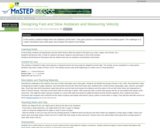
This activity is an inquiry lab where students are challenged to create a slow moving and fast moving plane and measure the speed.

In this video segment adapted from ZOOM, cast members make a bridge from a single piece of paper. Will it be strong enough to hold a hundred pennies?
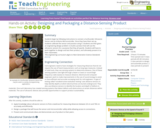
Students begin by following instructions to connect a Sunfounder Ultrasonic Sensor and an Arduino Microcontroller. Once they have them set up, students calibrate the sensor and practice using it. Students are then given an engineering design problem: to build a product that will use the ultrasonic sensors for a purpose that they all specify. Students will have to work together to design and test their product, and ultimately present it to their classmates.
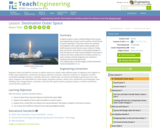
Students acquire a basic understanding of the science and engineering of space travel as well as a brief history of space exploration. They learn about the scientists and engineers who made space travel possible and briefly examine some famous space missions. Finally, they learn the basics of rocket science (Newton's third law of motion), the main components of rockets and the U.S. space shuttle, and how engineers are involved in creating and launching spacecraft.

How do your experiences shape your point of view? Understanding ourselves helps us to understand others.
This lesson/activity explores what shapes a child's identity. Children will examine how they see themselves, how they see others, and how others may see them.
By exploring the UNSUNG augmented reality (AR) app, students are introduced to singers Florence Mills and Tiny Davis near the start of the Harlem Renaissance—two artists who rose above societal challenges to make their voices heard, and to influence others in their community and beyond. Use this experience as the foundation to explore identity, empowerment, and community.
Estimated time required: 1 class period.
Technology required for this lesson: Tablet or Smartphone.

In this segment from Curious, learn about creating energy from solar rays to meet the growing energy needs of the world.